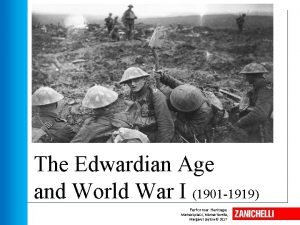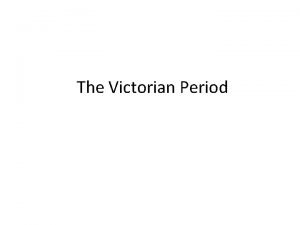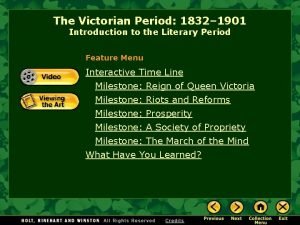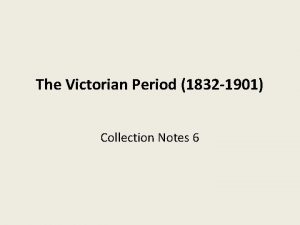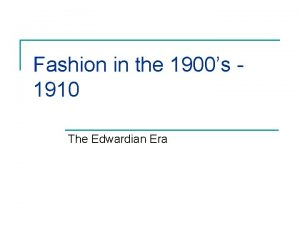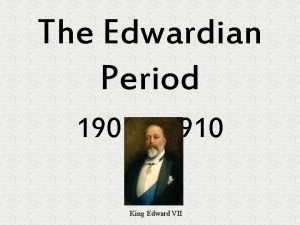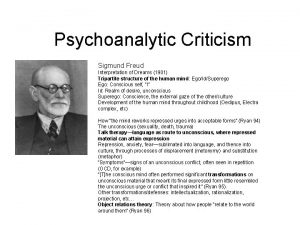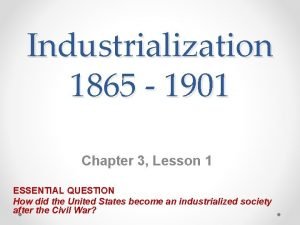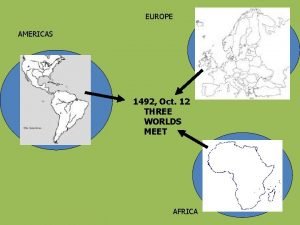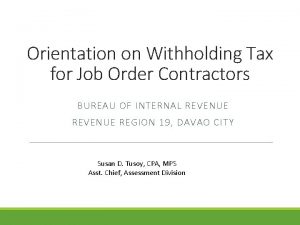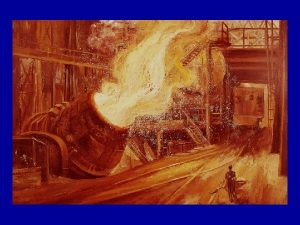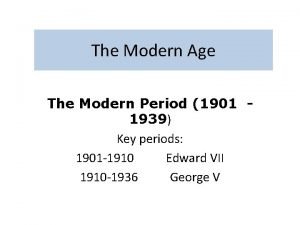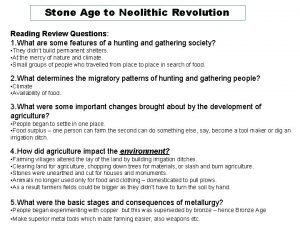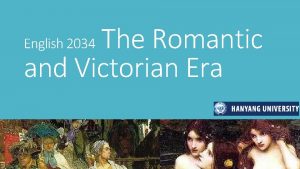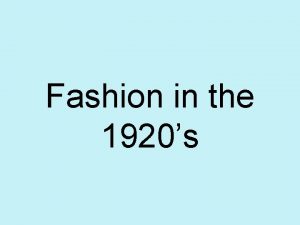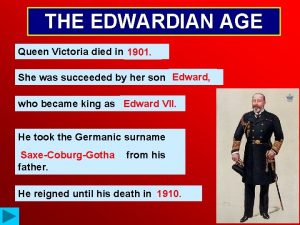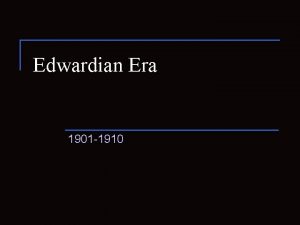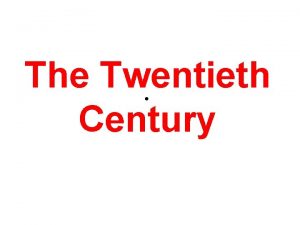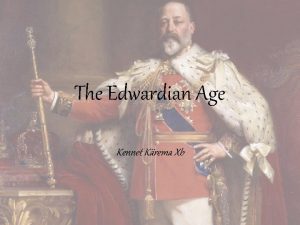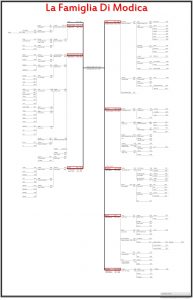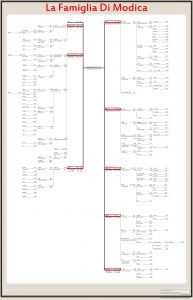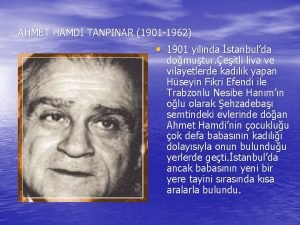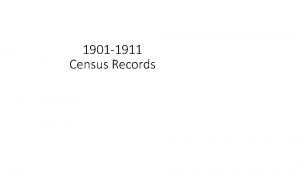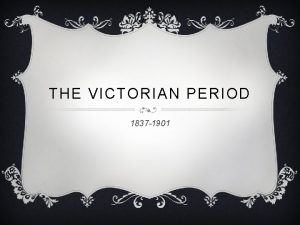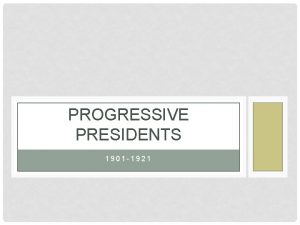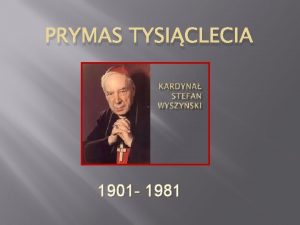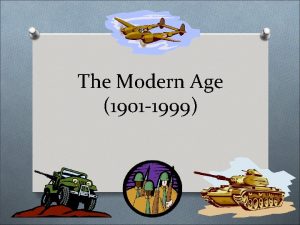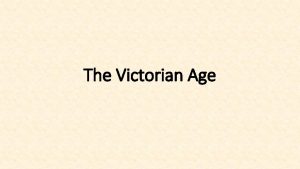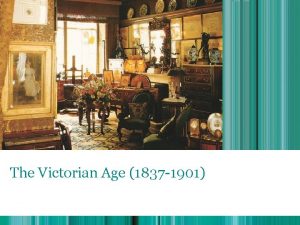The Edwardian Age and World War I 1901
























- Slides: 24

The Edwardian Age and World War I (1901 -1919) Performer Heritage Marina Spiazzi, Marina Tavella, Margaret Layton © 2017

The Edwardian Age and World War I 1. Edwardian England When Queen Victoria died, the royal house took the Germanic surname of Prince Albert of Saxe-Coburg-Gotha. Victoria’s son Edward reigned until 1910 as Edward VII. His greatest achievement was in foreign policy. Edward VII. Performer Heritage

The Edwardian Age and World War I 1. Edwardian England British power was being challenged by American emergent industries and the ambition at sea of Germany. King Edward VII signed the Entente Cordiale with France in 1904: England could pursue its interests in Egypt and France in Morocco. The king’s diplomacy created a new alignment in Europe: England could count on France and Russia against Germany, Austria or Italy. Edward VII. Performer Heritage

The Edwardian Age and World War I 1. Edwardian England Edwardian society was similar to Victorian society as regarded • moral values; • class distinctions; • the poverty affecting a large part of the population. Ladies of Edwardian society take a stroll in Hyde Park, London Performer Heritage

The Edwardian Age and World War I 1. Edwardian England The Liberals won the general elections in 1906. They were divided into two groups: those who supported the traditional liberal values laissez-faire and self-help. Performer Heritage those who supported New Liberalism in favour of certain forms of State intervention in social life.

The Edwardian Age and World War I 1. Edwardian England The foundations of the Welfare State were laid. Reforms were introduced : 1905 Free school meals. 1907 Free school medical inspections. 1908 The Children’s Act gave children some legal protection. It restricted the sale of alcohol and cigarettes. Performer Heritage

The Edwardian Age and World War I 1. Edwardian England 1908: The Old Age Pensions Act, which introduced pensions of one to five shillings for people over 70. 1909: minimum wages were fixed. 1911: The National Insurance Act, which gave people the right to free medical treatment and sickness benefits. Performer Heritage

The Edwardian Age and World War I 1. Edwardian England • The New Liberal David Lloyd George (1863 -1945) was Chancellor of Exchequer in charge of the country’s finances. • His People’s Budget of 1910 was rejected by the House of Lords its members would have to pay more taxes. Portrait of Chancellor Lloyd George by Christopher Williams (1911). Performer Heritage

The Edwardian Age and World War I 1. Edwardian England The Liberals passed the Parliament Act in 1911 • the Lords’ right to veto money bills passed in the Commons was removed; • they could only delay them for two years; • a general election would be held at least every five years. This system still operates today. Portrait of Chancellor Lloyd George by Christopher Williams (1911). Performer Heritage

The Edwardian Age and World War I 1. Edwardian England • 1911: A series of strikes of seamen, dockers and railway workers was called because of high prices and low wages. They involved a great number of men and were often accompanied by violence. • Lloyd George responded with unemployment benefits and health insurance for the workers of important industries. Performer Heritage Soldiers parade to intimidate workers, Liverpool 1911.

The Edwardian Age and World War I 2. The Suffragettes • At the beginning of the 20 th century only men were allowed to vote. • A few educated ladies had been arguing in favour of voting rights for women since the 1860 s. • In 1903 Mrs Emmeline Pankhurst founded the WSPU (Women’s Social and Political Union). • The Suffragettes, as they were called, protested that women should be able to vote. Performer Heritage WSPU leaders Annie Kenney (left) and Christabel Pankhurst.

The Edwardian Age and World War I 2. The Suffragettes The WSPU began to break the law to gain publicity and support. They began a campaign of vandalism: • they chained themselves to railings outside Downing Street and Buckingham Palace; • they made arson attacks on post boxes, churches and railway stations. Performer Heritage A drawing from the WSPU newspaper in 1909.

The Edwardian Age and World War I 2. The Suffragettes • The Government dealt with the protests harshly and sent many Suffragettes to prison. • In prison some women went on hunger strike to draw attention to their campaign. Prison authorities began force-feeding them. A drawing from the WSPU newspaper in 1909. Performer Heritage

The Edwardian Age and World War I 3. The outbreak of World War I • • In 1914 a Serbian nationalist assassinated Archduke Franz Ferdinand, heir to the Austro- Hungarian throne, and his wife Sophie in Sarajevo. Austria bombed Belgrade, the capital of Serbia. The German Kaiser, Wilhelm II, declared war on Russia and then on France. Germany invaded Belgium in order to attack France from an unexpected front before Russia or Britain could intervene. Performer Heritage The Assassination of Archduke Franz Ferdinand.

The Edwardian Age and World War I 3. The outbreak of World War I • Britain had participated in the creation of Belgium in 1831 and had guaranteed its neutrality. • It now faced the threat of a commercial blockade due to the presence of the German navy in the North Sea and the Channel. • It declared war on Germany on 4 th August 1914. • 130, 000 British soldiers crossed the Channel to fight on the Western Front in northern France. Performer Heritage

The Edwardian Age and World War I 4. Britain at war • Britain relied on volunteers until 1916. • The Empire sent troops from the dominions. • Conscription was introduced in 1916. • Women replaced men in their civilian jobs. Performer Heritage

The Edwardian Age and World War I 4. Britain at war The Easter Rising • • • The Commons had voted Home Rule for Ireland in 1914 but it had been suspended till the end of the war. In April 1916 there was a rebellion in Dublin. The leaders of the insurrection were supported by Germany. The rebels seized the General Post Office and other buildings in the centre of the city. The rebellion was repressed and the leaders executed. Performer Heritage General Post Office, Dublin.

The Edwardian Age and World War I 4. Britain at war In 1915 a German submarine sank the British passenger liner Lusitania. More than a thousand people died, including 128 Americans. The US President Thomas Woodrow Wilson (1856 -1924) sent diplomatic protests to Germany. Italy joined France and Britain, and the German Zeppelin airship carried out the first aerial bombing of London. Performer Heritage

The Edwardian Age and World War I 4. Britain at war Technology superior to tactics Machine guns vs a human charge. New technology = poison gas, tanks, airplanes, submarines. Very high death rates Battle of the Somme = 600, 000 Allies and 500, 000 Germans died for 125 miles of land. Performer Heritage Battles were fought not to win strategic objectives or win resources but to kill soldiers and wear down the enemy.

The Edwardian Age and World War I 4. Britain at war Life in the trenches • • Mud; lack of hygiene; boredom; fear of gas. Soldiers relieved the stress by means of superstition, religion, poetry, letters and drink. Shell shock Psychological effect of shell explosions psychological disorder. Battle of the Somme. Performer Heritage

The Edwardian Age and World War I 4. Britain at war In July 1917 King George V changed the name of the British royal family from the German Saxe-Coburg-Gotha into the British Windsor. The Bolsheviks seized power in Russia. The Italian army collapsed at the Battle of Caporetto in October. The Austrians had mass surrenders and desertions and Germany was starving. America entered the war on the side of the Allies in April. Performer Heritage

The Edwardian Age and World War I 4. Britain at war The end of the war By October 1918 the Germans were retreating on the Western Front. Germany asked President Woodrow Wilson for an armistice implying • German withdrawal from occupied territory; • national self-determination; • no punishment for the country. Britain and France agreed for fear that American power might increase if war continued. On 11 th November the guns fell silent Armistice Day. It was also called ‘Remembrance Day’ or ‘Poppy Day’ as the poppy was one of the only plants to grow on the battlefields. Performer Heritage

The Edwardian Age and World War I 4. Britain at war • 1919 Versailles Peace Treaty signed by British Prime Minister Lloyd George, Georges Clemenceau of France, American President Woodrow Wilson and Vittorio Orlando of Italy. • American President Woodrow Wilson proposed Fourteen Points to work out the peace treaty and prevent future wars. Allied leaders at Versailles. Performer Heritage

The Edwardian Age and World War I 4. Britain at war • President Wilson proposed a plan to set up the League of Nations an international organisation, with headquarters in Geneva, Switzerland. • Its aim was to resolve international disputes. • Wilson left office without managing to convince the United States to join. • The League of Nations was the forerunner of the United Nations. Performer Heritage
 From the edwardian age to the first world war zanichelli
From the edwardian age to the first world war zanichelli The edwardian war
The edwardian war The victorian age 1832 to 1901 unit test
The victorian age 1832 to 1901 unit test The victorian period (1832–1901)
The victorian period (1832–1901) The victorian period (1832–1901)
The victorian period (1832–1901) Victorian age 1832 to 1901
Victorian age 1832 to 1901 Stone age chronology
Stone age chronology Iron age bronze age stone age timeline
Iron age bronze age stone age timeline 1900 to 1910 fashion
1900 to 1910 fashion King edward edwardian
King edward edwardian 1837-1901
1837-1901 1896-1901
1896-1901 Freud 1901
Freud 1901 Lesson 1 the rise of industry
Lesson 1 the rise of industry British empire 1901
British empire 1901 Poblogaeth cymru 1971
Poblogaeth cymru 1971 Withholding tax contractors
Withholding tax contractors 1901 n. moore street
1901 n. moore street Numberblocks 1901
Numberblocks 1901 Industrialization (1865 to 1901 worksheet answers key)
Industrialization (1865 to 1901 worksheet answers key) Uri ng panitikan sa panahon ng amerikano
Uri ng panitikan sa panahon ng amerikano Victorian age and modern age
Victorian age and modern age Neolithic period timeline
Neolithic period timeline Romantic age and victorian age
Romantic age and victorian age Toward civil war lesson 3 secession and war
Toward civil war lesson 3 secession and war
